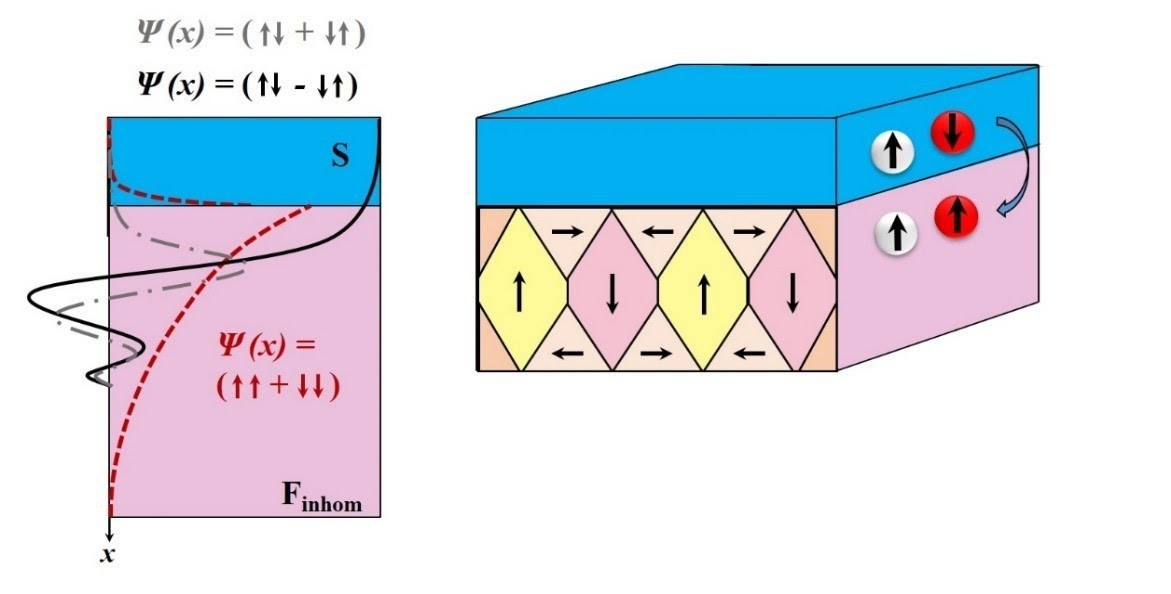Coupling magnetism to superconductivity in thin films
The antagonist electron spin orders in ferromagnetism and in spin-singlet Cooper pairs mediated superconductivity hamper the application of superconductor/ferromagnet (S/F) thin film heterostructures in low power dissipation spintronics because of the low penetration depth of those Cooper pairs in the ferromagnet. However, at carefully engineered S/F interfaces, equal-spin-triplet Cooper pairs with large penetration depth can be generated. This is the case when the ferromagnet shows in-plane magnetic texture like domains [1], as depicted in the figure.

References:
- A. Stellhorn, A. Sarkar, E. Kentzinger, J. Barthel, A. Di Bernardo, S. Nandi, P. Zakalek, J. Schubert, and T. Brückel, Tailoring superconducting states in superconductor-ferromagnet hybrids, New Journal of Physics 22, 093001 (2020)
Proximity effect in high-Tc superconductor/ferromagnet heterostructures
In highly anisotropic materials, such as high-Tc superconductors and ferromagnetic oxides, the competition between the strong correlated electronic structure can lead to new emergent phenomena at the interfaces of these antagonist materials. These phenomena are called proximity effects and have great potential for application in the fields of superconducting spintronics and quantum computing.
A novel type of proximity effect was observed in thin films heterostructures based on the high-Tc superconductor, YBa2Cu3O7-x (YBCO), and the itinerant ferromagnetic oxide with perpendicular magnetic anisotropy, SrRuO3 (SRO). This system was prepared using our high oxygen pressure sputtering system and characterized by our in-house techniques.

References:
- V. A. De Oliveira Lima, M. Faley, O. Concepción, M. H. Hamed, S. Nandi, E. Kentzinger, T. Brückel and C. Bednarski-Meinke, Anomalous magnetoresistance around the critical temperature in heterostructures of high-Tc YBa2Cu3O7-x and ferromagnetic SrRuO3 with perpendicular magnetic anisotropy, Submitted (2024).
Dr. Emmanuel Kentzinger
JCNS-2: Scientific Staff
- Jülich Centre for Neutron Science (JCNS)
- Quantum Materials and Collective Phenomena (JCNS-2)
Room 325A

